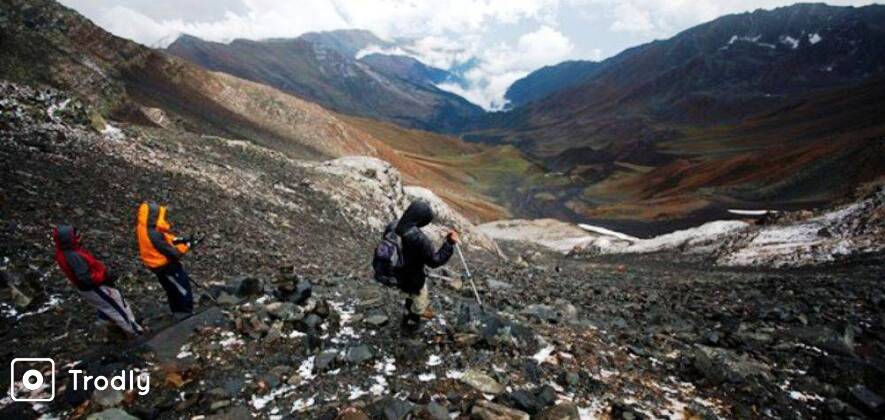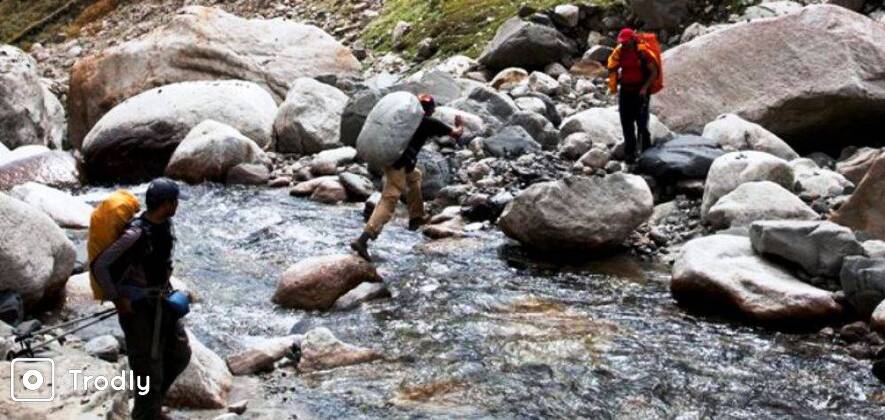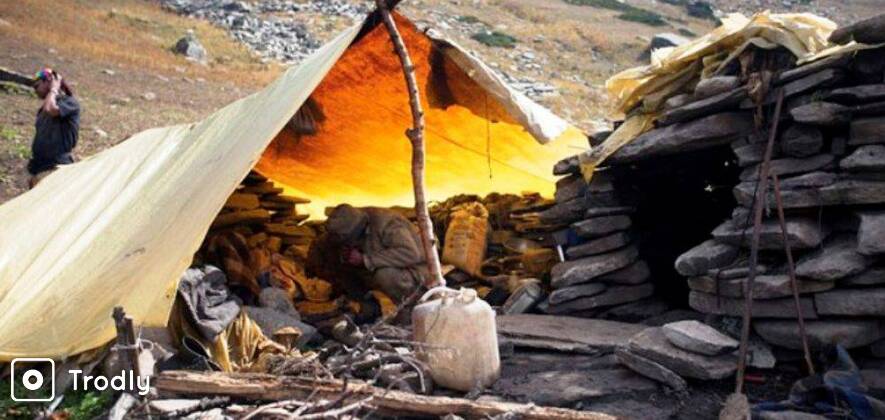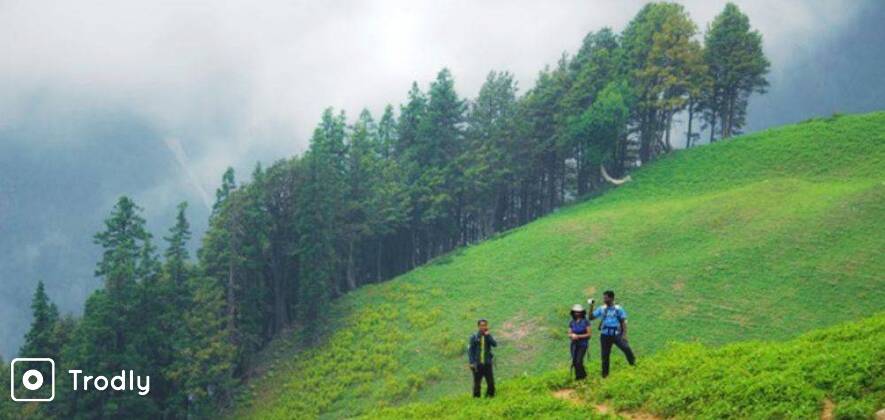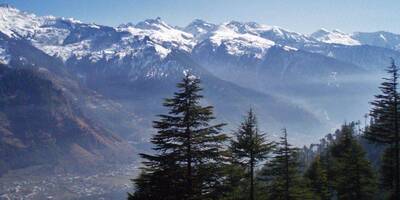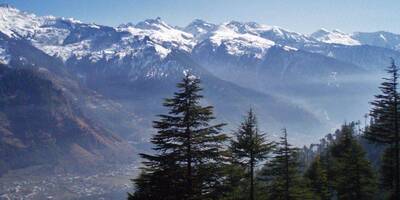Kaliheni Pass Trek
Trip Overview
Kaliheni pass (also known as Kalihani Pass) trek is one the offbeat trails in the Himalayas offering contrasting beauty of green and arid regions. Come conqueror majestic heights of 4800 metres.
Highlights
- A moderate to challenging trek starting from Manali.
- The highest pass in the shepherd route from Kullu valley to the remotest Bara Bhangal area of Kangra valley in Himachal Pradesh.
- 70 kilometres of trekking distance.
- Service of experienced mountain guides and good-quality tents.
Detailed overview
The pass at 4800 m/15750 ft, traditionally known as the Senghor Jot, is the highest pass in the shepherd route from Kullu valley to the remotest Bara Bhangal area of Kangra valley in Himachal Pradesh. Kali-Heni which means black snow is rightly named as you can observe ancient glaciers with old ice formations both to the approach and at the pass. The pass itself is glacial. The route to Kaliheni and back to Sangchur village takes 7 days and 70 Km of trekking through Alpine forest inside Manali Sanctuary, splendid rolling meadows and glacier moraine zones. In jest, this interior high altitude mountain pass between Kullu and Kangra is a unique Himalayan trail of its own kind with unexplored wilderness.
Itinerary
Day 1: Manali - Vashisht | 3 km
- You will have to arrive at Manali by noon. Your guest house accommodation is at Vashisht (2050 m/6725 ft), 3.5 km further up from Manali town (Rs 150 by Auto Rickshaw).
- Vashisht has a temple and is famous for its hot spring inside the temple.
- In the afternoon take a walk towards Jogini falls for a couple of hours. The trail is well defined.
Day 2: Vashisht - Lamadugh | 10 km - 6/7 hours
- On the second day morning, your trek starts. You take a short car ride from Vashisht to reach the opposite side of Beas river cutting Manali town.
- The trek starts from the upper reaches of Manali (7000 ft) behind the Hadimda Temple. The PWD road transforms into a narrow foot-route which vanishes into the jungle
- Initially, the trail moves along Manali Sanctuary within the dense and beautiful forest with overwhelming large trees like the Deodars, Walnut, Maples with steep up rise having only a few intermediate reliefs.
- About three hours of uphill march one reaches a distinct clearing, more like a field with a few stones scattered around.
- Take a lunch break in this serene place surrounded by forest all around and having glimpses of the faraway Kullu valley we left beneath. The next stretch of the trek starts with considerable steepness for the next 2/2 and half hours.
- At the last couple of kilometres stretch, the slope eases out and walk continues through dense forest with mosses and lichens all around. At last after crossing couple of humps, one emerges into a large bowl-shaped clearing with an abandoned remnant of a trekkers hut in the middle. Herein the place, Lama Dugh(3050 m/10000 ft), to camp for the night.
Day 3: Lamadugh - Riyali Thatch | 11 km - 6/7 hours
- The trek starts early the next day and gradually ascends on the stony trail with the receding tree zone around. As one gradually approaches the Khanpari pass (12000 ft), view of the prominent massifs of the CB range, Indrasan and others is all seen towards the right.
- Close to the trees are all gone with extensive high altitude meadow region all around and the steepness becomes harder.
- The pass itself at the end of Tree Line and denotes the starting of Alpine meadows, (called “Thatch” locally as compared to “Bugyal” in Garhwal & Kumaon).
- Looking ahead from pass the meadows of Riyali encompass the vista. A gentle walk and followed by a steep descent of one and a half hours and later by a kilometre of the relatively gentle trail.
- One reaches the end of the Riyali Thach (3400 m/11200 ft) in the afternoon to camp for the night. Total distance is 11 km and can take 6/7 hours. The beauty and the variety of the day’s trail will leave one ruminating in the night.
Day 4: Riyali Thatch - Kaliheni Base | 9 km - 5/6 hours
- The trek starts off early the next day and immediately leaves the Riyali area and descends into a zone of trees. Soon after a km of up and down walk, the openness of the Bugiyal comes once again and the glimpse of the Kaliheni Pass can be seen far away and up above in the front.
- The path descends slightly again and soon comes to the first river crossing. Crossing this and just taking the right is the next crossing, the stream here is flanked by amazing old glacial edges jutting out with black ice visible underneath.
- Immediately after the crossings, an arduous climb follows on grassy mountain slab and with a ridge walk, which takes the trekker to the other side of the mountain. Once the ridge is finished we can see the base camp area a kilometre ahead.
- You will be camping for the night in the base camp. A good rest and sleep are required to undertake the next day’s attempt.
Day 5: Kaliheni Base - Kaliheni Pass - Kaliheni Base | 12 km - 7/8 hours
- The trek should start early morning to reach Kaliheni Pass and back to base feasibly. The walk starts over the immense rocky destruction zone, a difficult stretch.
- However, the toiling is immediately rewarded with the stunning view of the range containing the Sanghor Jot standing like an immense wall and guarding the route to Bara Bhangal. Movement is really slow here and steepness is considerable.
- Finally, reaching on the top of the ridge, the other side comes into view with breathtaking ice fields.
- Kaliheni Pass (4800m/15750ft) itself on the glacier, with a distinctly beautiful opening of about 50m between two steep rocky ridges. The pass has a crevasse in the middle.
- One can spend some time on the pass but should get off early and start the descend downwards and the weather here is treacherous and could become foggy, leading to snowing in the later half of the day.
- Exhausted after the day’s hard toil, one reaches the camp shelter with a day’s trek worth remember for life.
Day 6: Kaliheni Base - Dor Nullah via Riyali Thatch | 15 km - 6/7 hours
- The trek starts leaving behind the Kaliheni Base and retracing the same path all the way to the Riyali Thach camping ground.
- After 10 minutes you will take a detour from the main trail ( the trail through which you came) and take the trail right of you. Your campsite can be located from here but will take a couple of hours from this place. A 200 m/650 ft of descent takes us to the bed of a stream. We gradually follow a stream down and cross to its left bank.
- After the crossover the trail is somewhat long but rewards with the beautiful expanses of the sprawling meadows at Dor Nullah, and the campsite (3200 m/10500 ft) is itself at the top of a round Thach/Bugiyal.
Day 7: Dor Nullah - Intermediate Camp | 8 km - 4/5 hours
- The trek starts and you traverse the meadows on the last day of the trek, back descending towards Sangchur.
- After a couple of hours, you will reach the tree line distinctly marking the edges of the meadows. The trail turns narrow and the steep descent starts through the bushy and shrubby undergrowth.
- As one descends, the valley rises up and gets more distinct. After an hour of descent, one can suddenly see a fantastic view of the vast stretch of Kullu valley, from Manali to Kullu town with the meandering Beas in the middle, an unforgettable bird’s eye view. You will camp at a suitable spot.
Day 8: Intermediate Camp - Sangchur - Manali | Trek 6 km - 4 hours | Drive 30 km - 2 hours
- Today is the last day of your trek and you will negotiate a steep and muddy (at places) descent marked with high stepping stones. The sustained lower gradient continues for more than an hour.
- Entering in the Sangchur Village (2150m/7050 ft) brings again a relief and joy of seeing a habitation after a break in the wilderness.
- You will take a pre-booked car from Sangchur to Manali, 30 km via Patlikuhl.
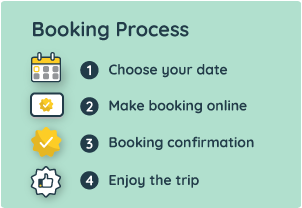
Basic Details
Inclusions
- 1 Night’s accommodation at Vashisht, Manali (Day 1) on sharing basis. Meals at Manali are on your own
- Car drop from Vashisht to trek starting point (Day 1) and pick up from trek end point Sangchur to Manali back
- All meals during the trek (From Day 2 lunch to Day 8 lunch). Regular Indian style nutritious vegetarian food during the trek (including occasional eggs), breakfast packed/hot lunch (depending upon the time you reach a campsite), snacks, dinner along with coffee/tea/soup
- Excellent Trekking Guide(s), who will be a local to this particular area and has a profound knowledge of the trekking trails around
- Specialised Cook, Support staff, Porters/Packed Animals for carrying the central logistics of the trek
- Stay in tents (3 persons dome or ridge shaped tents) on triple sharing basis during the trek
- Camping equipment like a sleeping bag, Carry mattress, Gaiters, Micro spikes/Crampon. (Bring your own sleeping if you have a high altitude specific personal Sleeping Bag. This is always better for hygienic reasons.)
- Kitchen tent, dinning tent and toilet tent as required during the trek
- All permit fee, camping charges, forest levy required for the trek
- Basic Medical & First Aid kit
- Accidental Insurance Policy covering high altitude trekking tours (For Indian nationals it is included in the TREK FEE, up to 60 years of age). It covers your trek as well as your return journey to home (10 days)
Exclusions
- Any meals at Manali. There are a good amount of choice for vegetarian and non-veg food in the restaurant of Vashisht
- We assume that you will carry your personal Rucksack/Backpack with all your personal belongings. If you want to offload your Rucksack and be carried by our Pack Animal/Porter then you need to pay additional ₹ 2000 for the entire duration of the trek. The Rucksack should not weigh more than 10 Kg
- Any tip/gratuity to the support staff
- Any expenses of personal nature
- Anything not mentioned in the inclusions
Why book with TRODLY
- Best Price Guarantee
- Verified customer reviews that help you make the right decision.
- Qualified operators. All partner operators selected after rigorous system of checks.
- Free Cancellation on Most Trips
- Only Best Trips - Our team of travel experts bring uniquely local, safe, and exciting experiences to the community.
- 100% Secured Payments
Important Information
- Trekkers must be physically in good condition to endure this trek. Prior high altitude trekking experience is highly recommended.
Rucksack/Back Pack: 1; (must have). Between 40 to 50 Litres. Don’t buy more than 60L unless you are in expeditions. These will be heavier and can cause discomfort if not fully loaded!)
Rucksack cover (Waterproof): 1; Advised. MUST for protection from rain/dust/stain etc. (Alternately you can keep your clothing and warm jacket inside polythene pack. Do get the pack(s) back to home and reuse/recycle).
Daypack/Knapsack: 1; Optional (Can carry along with you with a water bottle, food, camera and wind/waterproof etc.) if you want to offload your Rucksack in permissible routes.
Trekking Shoe/Boot: Pair; (must have). A good quality trekking shoe/boot must have the following specs :
i) A sticky rubber sole with a lug (indentations for better grip).
ii) Ankle support (Medium or high ankle).
iii) Waterproofing membrane. (A must for high altitude and winter treks).
Get a pair and “break-in” well in advance that you don’t face any sores/blisters once you are in mountains.
T-shirt (Base layer while you are hiking): 3/4; (must have). Take at least one Dry fit/Quick dry type which can ventilate sweat/moisture wicking. These are made of synthetic materials. Cotton T-shirts are NOT advised and avoid especially when you walk.
Warm Jacket (Mid layer clothing for warmth): 1; (must have)Warm Fleece Jacket/Synthetic fill (Some refer as Hollow Fill) Jacket/Down feather Jacket.
While hiking you will not require this unless you are hiking in cold conditions. Use this when you cool down at the campsite).
Windproof Jacket/Wind Cheater (Outer layer clothing for protection from wind and rain/snowfall): 1 (must have); A hooded one made of water-resistant/repellent material is highly advised.
Use this along with Base layer (t-shirt) while hiking unless it is warm and sunny weather. Wear this always as outer layer to protect from wind chill be while hiking or at campsite.
Thermal wear (Base Layer once you reach campsite): 1 pair; Upper and lower (Woolly cot). Must for winter treks.
Trek pant: 2 pairs (must have) Can be Track pants (avoid cotton), 3 quarter/Cargo or Convertible kind.
One Dry fit/Quick dry track pant is advised. Water repellent/proof quality is a plus.
For altitude above 5000m/16400ft, you should use windproof and waterproof trek pants.
Raincoat/Poncho/Waterproof clothing: 1 (must have); Waterproofing during your trek in the Himalayas, be it in summer or winter.
This can be achieved by any of the following:
ii) Use your windproof jacket and hiking pant having water repellent/proofing quality.
ii) A Poncho/Raincoat.
Balaclava/Woolen skull cap/Monkey Cap: 1; (must have) for protection from cold. Made of woollen/synthetic warm material.
Sun cap/Wide-brimmed Hat/Bandana: 1; For protection from the sun while you hike.
Undergarments/Innerwear: As per need.
Hiking Socks: 3/4 pair; Use full-length socks (Don’t use tennis socks). 100% Cotton socks are NOT recommended as these absorb sweat and dry slowly. A pair of woollen material is nice to have especially in winter treks.
Woollen gloves: 1 pair; (must have).
Waterproof gloves: 1 pair; Optional. Useful especially on high altitude treks where snow/ice is encountered.
Camp sandal: 1 pair; Can be a strap on sports sandal or a Hawaiian sleeper.
Walking Sticks/Trekking Poles/Ski Poles: 1 pair/Single; Nice to have, reduces the pressure on knees and gives balance especially while descending. Advised at least one pole for treks involving snow/ice.
Knee cap: 1 pair; Optional. Makes a difference especially if you have knee injuries/problems (Neoprene added variant is better).
Water bottle/Hydration pack: 1; (must have). Good quality plastic bottle.
Sunglasses: (must have) for all the high altitude treks and winter treks. Polarised/Anti-glare is always a better option in the snow with UV400 (UVA & B) protection. Trekkers using spectacle can order custom make powered sunglasses.
Torch/Head Lamp with extra batteries: (must have). Head torch keeps your hands free.
Accessories/Toiletries: Optional and try to share when you travel in a group.
Sunscreen lotion – Optional. At least 30/40 SPF.
ChapStick/Cold & Moisturising cream – Optional. As per need. Use small tubes/bottles.
Toothbrush and tooth paste – Carry a smallest available tube of toothpaste.
Soap/Soap strip – Carry small pocket size soap or Soap strip.
Hand sanitiser – Optional. Small bottle.
Tissue roll ( Toilet paper) – This is a must item as water may not be available in the vicinity.
Towel – Medium size (lightweight).
Anti-Fungal Powder – Optional. This helps to keep the socks and the trek shoe drier and odour free to an extent. Carry the smallest container.
Camera with extra cells: Optional. Normally there is no charging point on the Himalayan trek routes, carry spare batteries/power bank.
Dry food items(Kit): 1; (must have). Carry some dry fruits, chocolate/energy/protein bars and Glucon D/Tang/Gatorade.
Personal First-Aid Kit: Optional – Antiseptic cream, Betadine/Dettol/Savlon, Band-aid, cotton, crepe bandage, safety pin etc.
Medicines Kit: 1; This is a simple guideline and a doctor’s consultation is recommended.)
a) General medicines comprising of a headache, fever, vomiting, stomach upset and pain killer (Volini gel/spray)
b) Anti Diarrhoeal
c) Antibiotics – ( choose broad spectrum antibiotics for treating a variety of infections – carry a course of each)
d) Mild analgesics – (Aspirin/Paracetamol etc but DO NOT take Codeine based painkillers).
e) Strong analgesics (Co-Proxamol/Ponstan/Temgesic, use with care).
f) Anti-inflammatory (Nurofen or diclofenac sodium)
g) Diamox – This helps in acclimatisation (a proper dosage is must if taken. Drink a lot of water as this is a diuretic drug.
Cancellation Policy
- Full refund if cancelled before* 7 days
- 50% refund if cancelled before 3 days
- No refund after that
Meet-up Information/Reporting Point
- Manali, Himachal Pradesh
- The operator details will be sent post-booking, you may get in touch with the operator for any queries related to pick-up/meeting point
₹ 14190 Per Person
Similar Exciting Activities

Get trip inspirations, offers and more.

